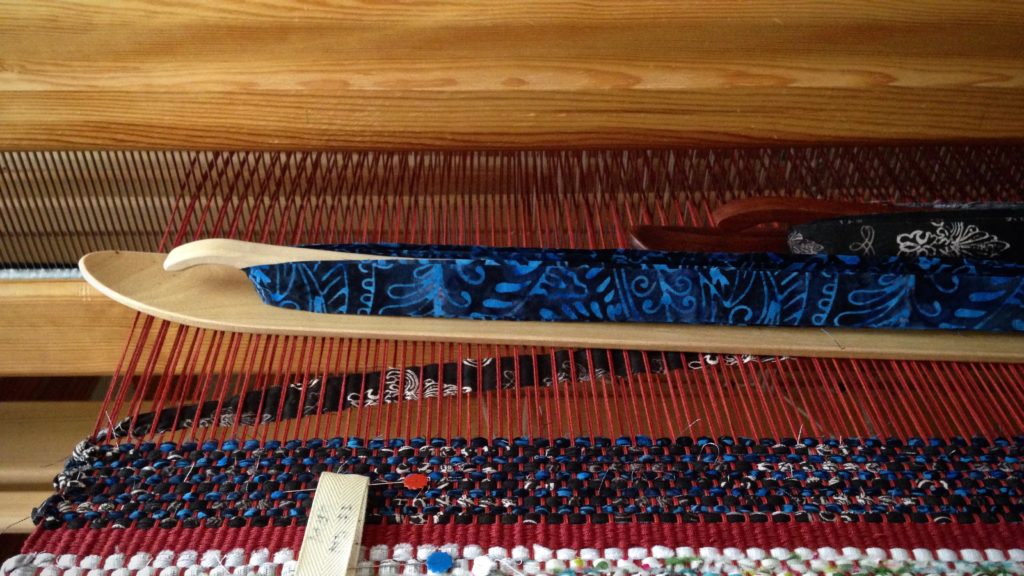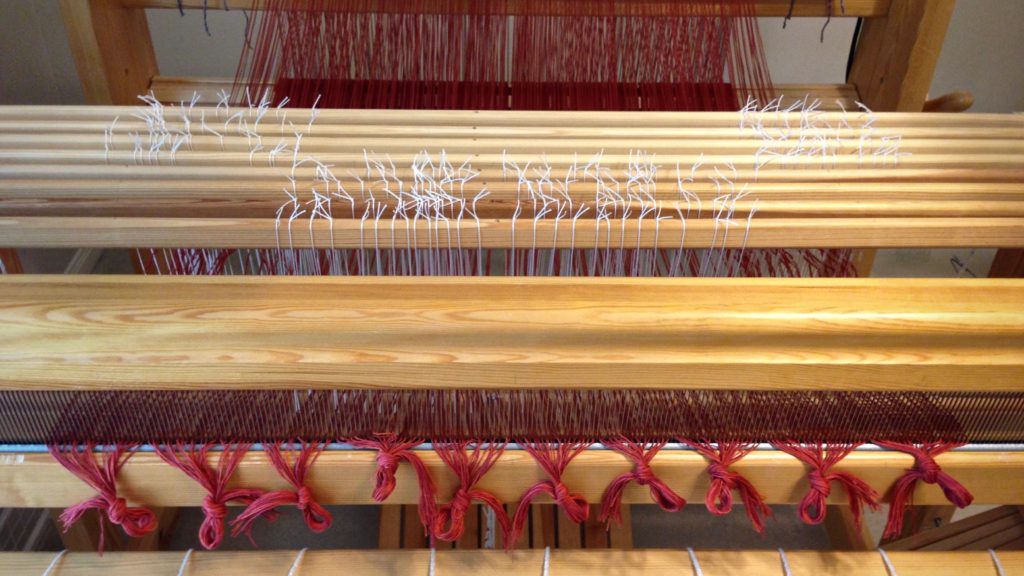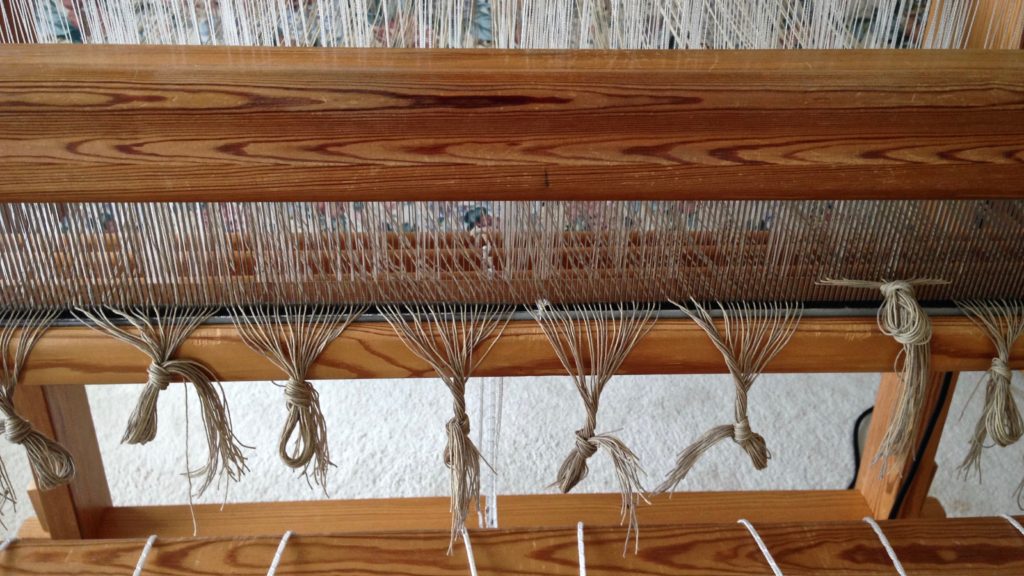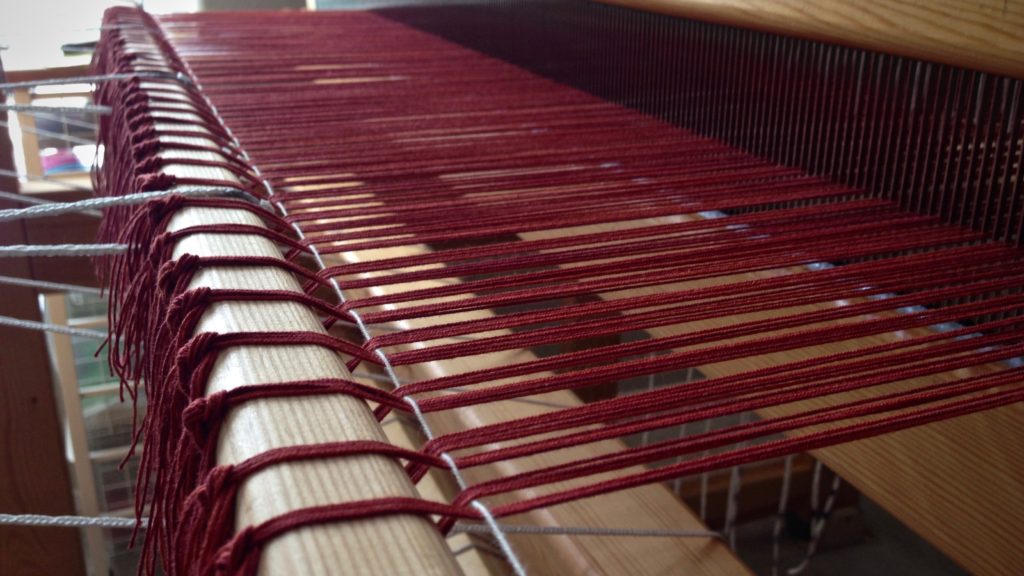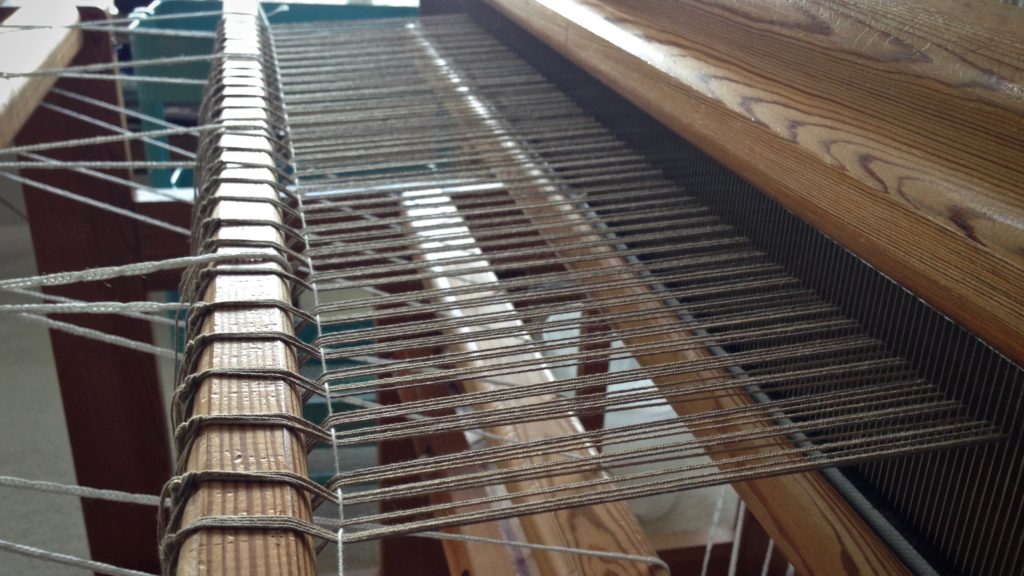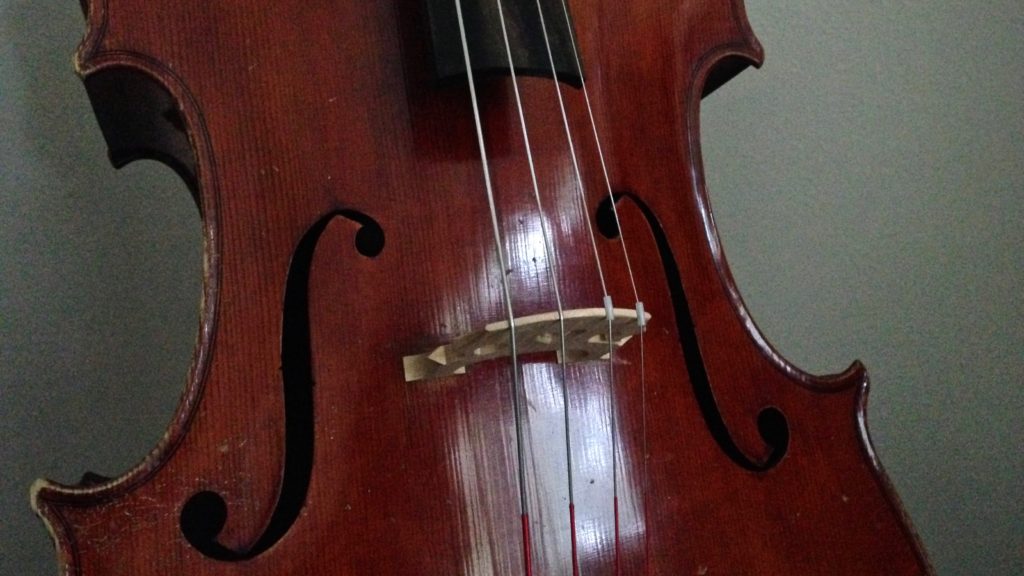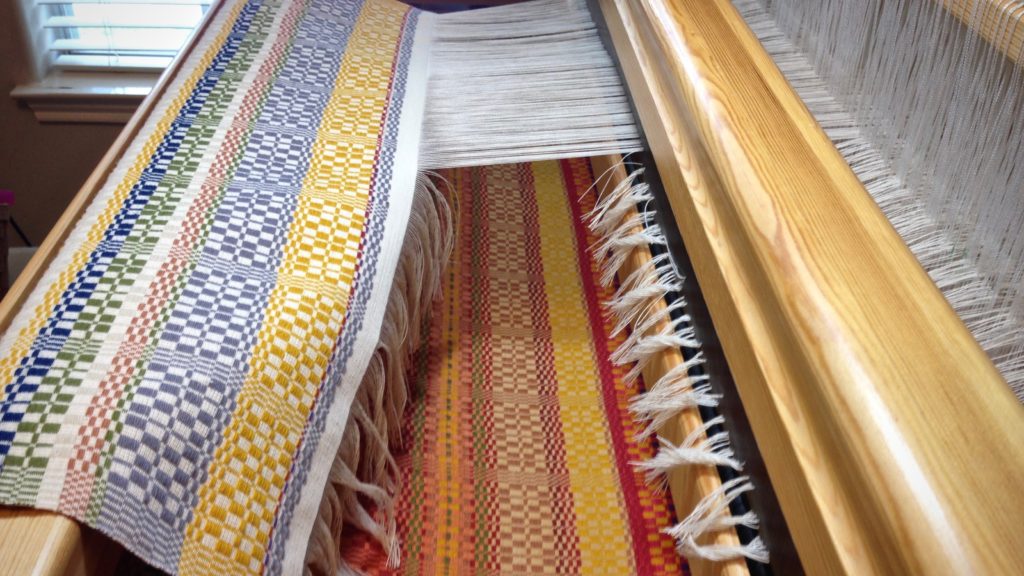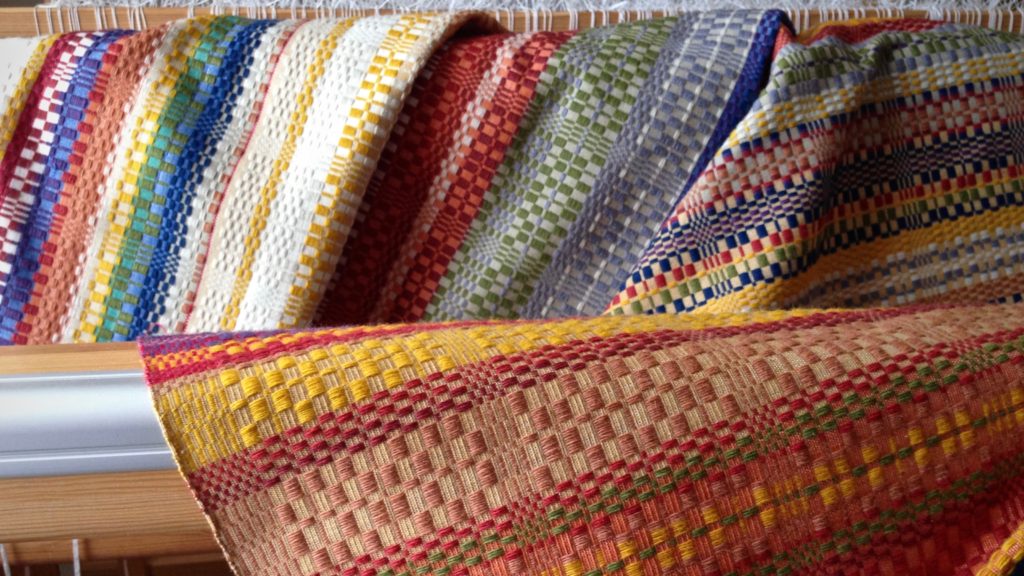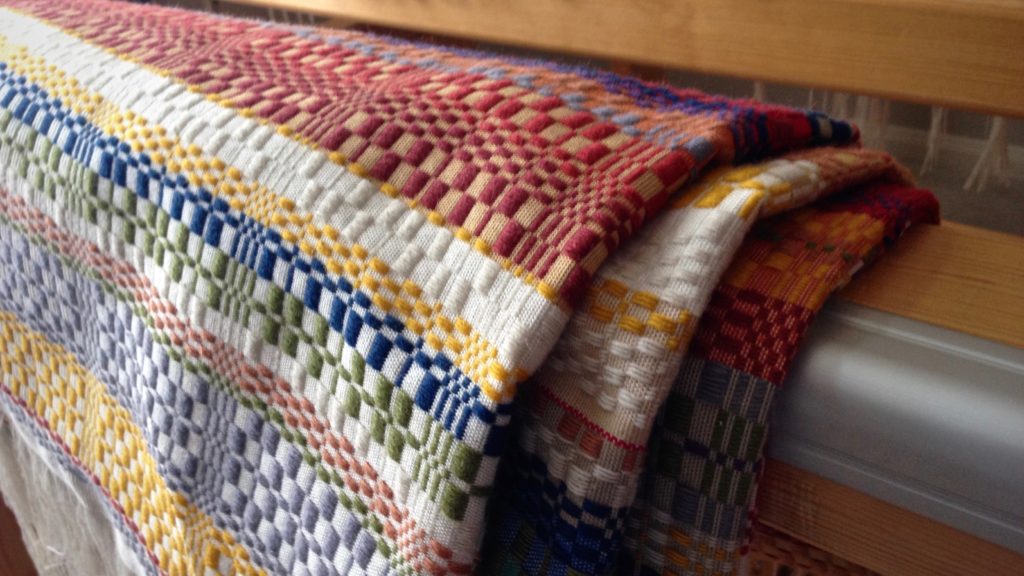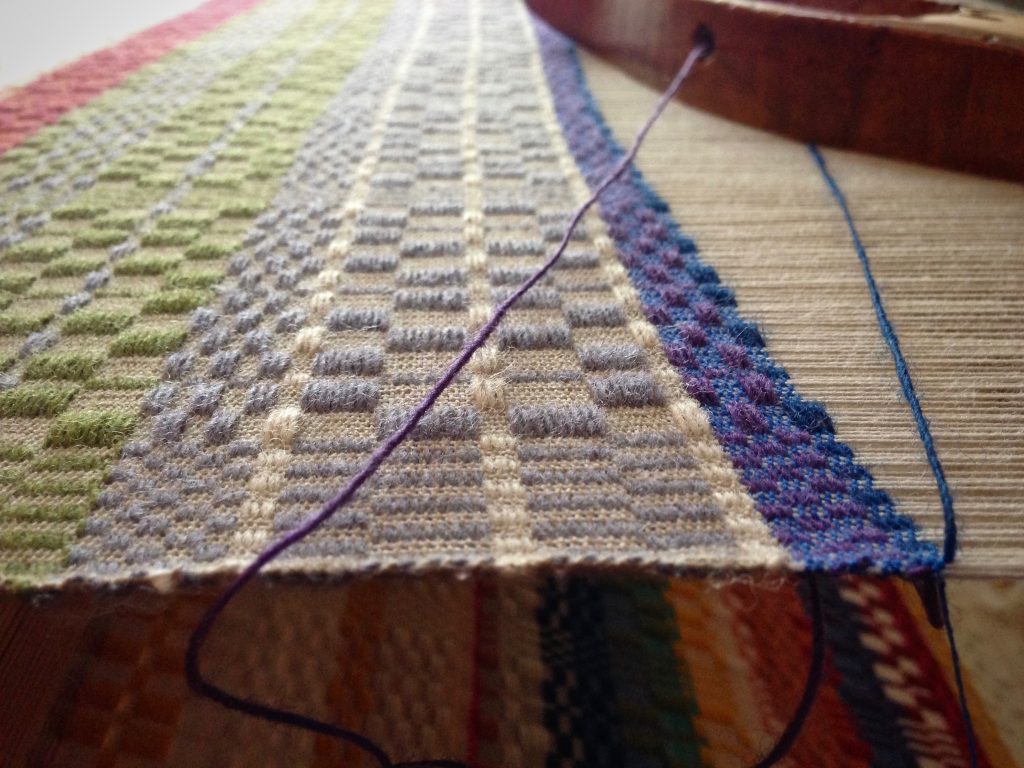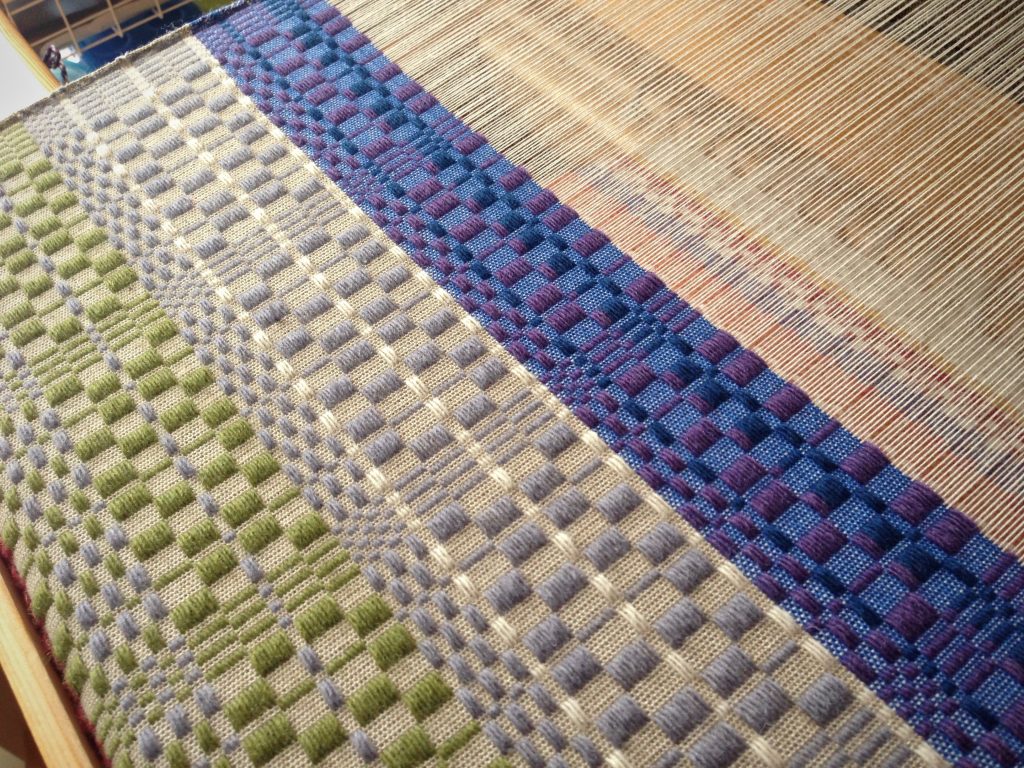Double binding on one and rosepath on the other. Both looms are weaving rag rugs. Detailed plans, multiple shuttles, fancy footwork. Piles of cotton fabric, and miles of cut fabric strips. I know what to expect when all these elements combine, but it still fascinates me to see the “roses” bloom on the rosepath and the two layers synchronize in the double binding!
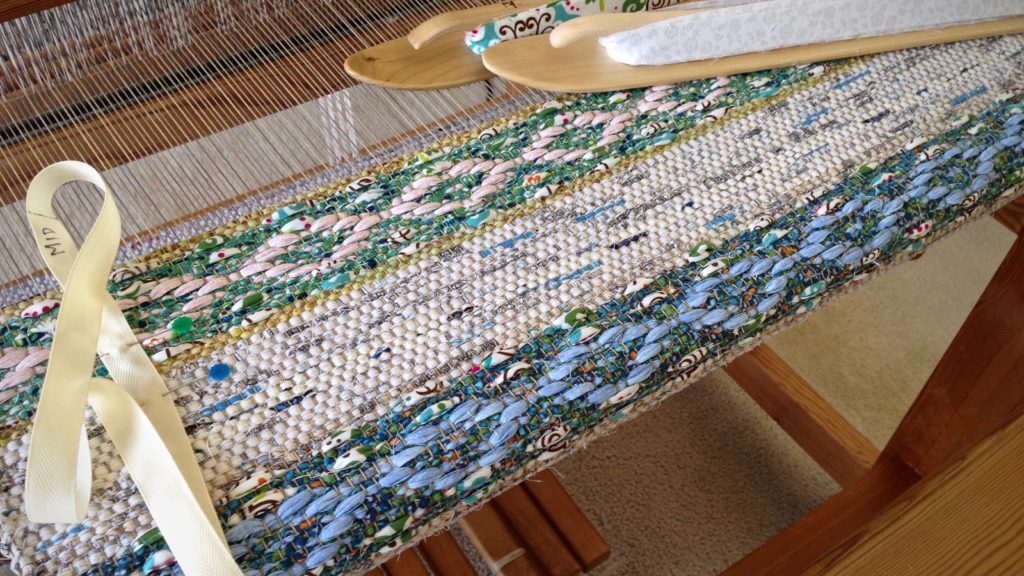
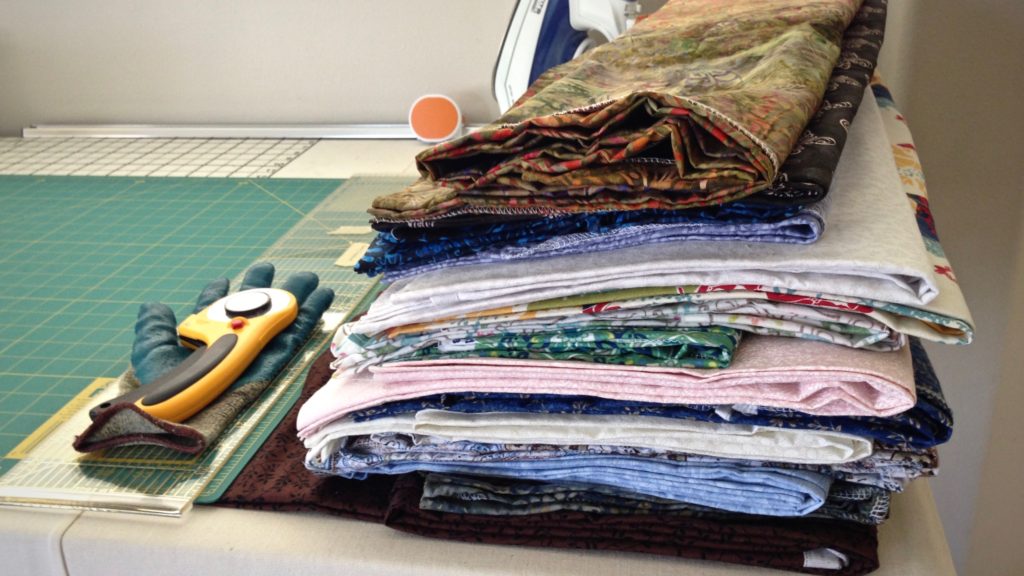
Rosepath has demanding requirements–for threading, treadling, shuttle shuffling, and selvedges. Double binding on eight shafts has its own challenges–which shuttle goes first? But when I am at the loom weaving rag rugs I feel like singing. All of the efforts seem like bonuses to me. Everything comes together in a wonderful fashion. There, perched on my loom bench, I am doing what I love to do!
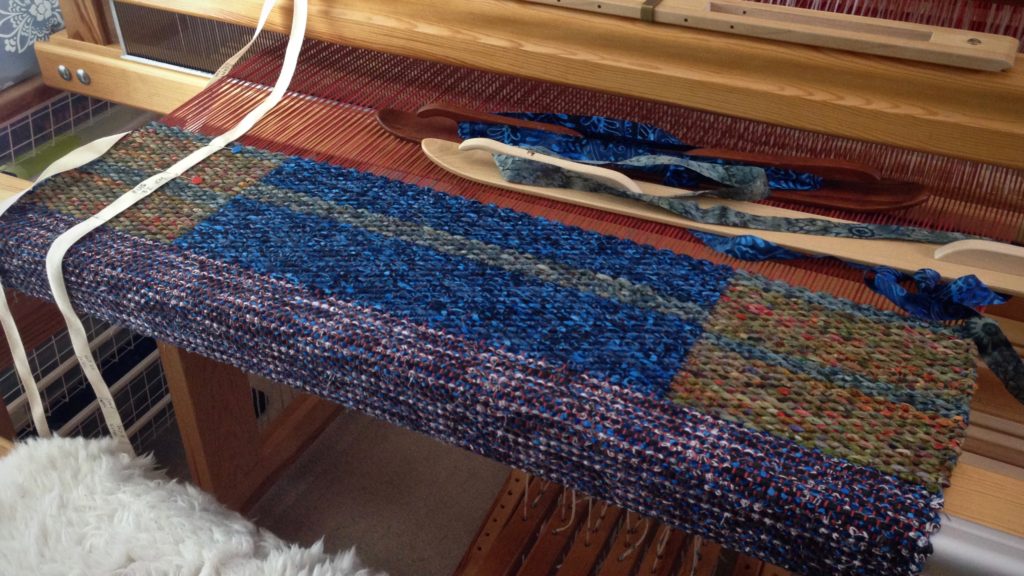
Wisdom is closer than we think. It’s within reach. Hidden for us, not from us, our heavenly Father offers this gift and challenge called wisdom. The delight of rosepath only happens through the threading and treadling demands. Within the challenge of two-shuttle weaving lies the secret to double binding’s appeal. The thoughtful, truth-seeking approach to life may feel like work. But it’s those very efforts that bring us to the delight and surprise of wisdom’s jewels.
May you find roses blooming on your path.
Happy Weaving,
Karen

